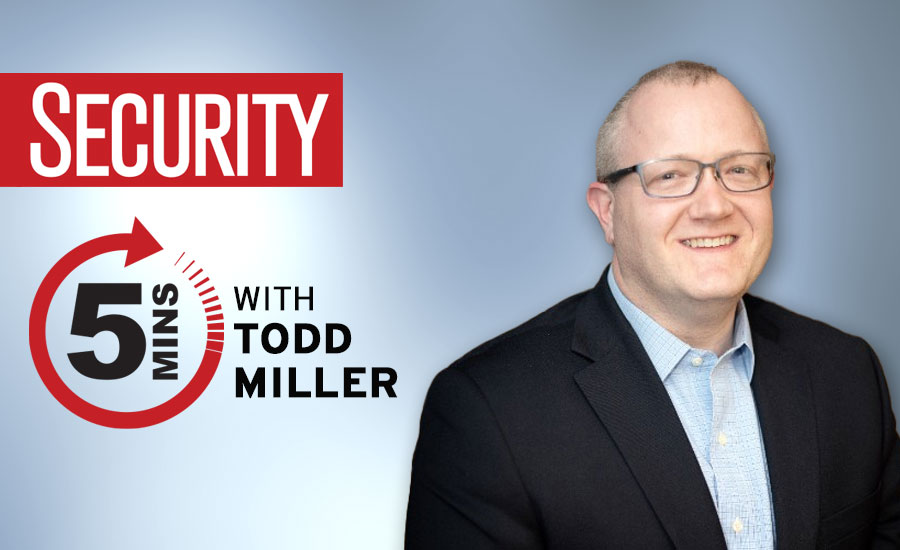5 minutes with Todd Miller - How to build community trust for better public safety

A recent survey conducted by Rave showed that only 22% of respondents completely trust the information they receive from local officials. Many factors – such as the spread of disinformation, social unrest and the ongoing pandemic – likely contribute to this low level of trust. However, it still poses a big problem to local leaders who are trying to keep residents safe – especially during the ongoing pandemic. We connected with Todd Miller, SVP of Strategic Programs at Rave Mobile Safety, to talk about how local governments and organizations can go about re-building trust in their communities by communicating effectively with residents.
Security: What is your background and current role?
Miller: I’m currently the Senior Vice President of Strategic Partnerships at Rave Mobile Safety, working with our outstanding partners and elected officials across the country.
Prior to joining Rave, I managed the self-service consulting practice at Oracle, where I was responsible for the delivery of customized software solutions for clients in North America, supporting millions of users.
Security: A recent survey conducted by Rave showed that only 22% of respondents completely trust the information they receive from local officials. What factors contribute to this low level of trust?
Miller: 2020 was a turbulent year, and much has happened that has made the public question whether or not they can trust what local officials are telling them. Many factors — such as the spread of disinformation, social unrest and the COVID-19 crisis — likely contribute to the low level of trust we see between the public and officials tasked to protect them. Over the past few years, the political climate has also become increasingly polarized, which can certainly make the public question the intentions behind what elected officials are saying.
Security: Why is this a big problem for safety and security local leaders?
Miller: When we don’t trust what someone is telling us, it becomes easier to disregard or dismiss this information. At the same time, there’s been a huge increase is disinformation circulating on the internet and on social media, possibly directing people to sources that are not reliable or accurate.
Essentially, low levels of trust in local leaders can have negative effects on residents receiving and digesting important information relevant to their safety. Information coming from governors, local leaders, departments of health or other local organizations about public safety and other local issues must be viewed by residents as trustworthy and reliable so that they use it to make informed decisions, especially in emergency situations.
Luckily, it doesn’t have to be this way. Many people are open to receiving communications directly from local leaders, providing information about themselves to enhance emergency response and more — local leaders just need to know how to approach residents appropriately and rebuild that community trust.
Security: How can local governments and organizations go about re-building trust in their communities?
Miller: Here are three best practices:
- Use voices your community trusts: While only 22% of respondents trust information from local officials, that number increased significantly when it comes to first responders. For example, 62% of respondents trust information from firefighters and 59% from EMTs. To improve community relations and trust, it may make sense for elected officials to take a backseat when it comes to sharing certain information and let public safety officials take the helm.
- Give residents options for communications: Many respondents shared that receiving direct alerts and getting personalized alerts would increase their trust in the information they received. State and local agencies should deploy technologies that give residents choices over how and when to receive alerts — and use that same technology to appropriately target those who need specific information. The more personalized local leaders can make the updates they send, the more receptive residents will be and the more likely the information will be read.
- Apply technology to innovate on safety: Technology can play a major role in allowing local agencies to collaborate and share data to ensure the best protection for the residents they serve. For example, by offering residents the ability to voluntarily create Safety Profiles, emergency response can collect and share important data on medical conditions, mental health, emergency contacts and more. When first responders have access to this information going into a call, they can more accurately prepare and personalize a response, saving valuable time and ultimately lives.
Security: What are the top safety concerns as we return to public spaces following COVID-19?
Miller: Our survey showed that roughly 75% of respondents feared returning to public spaces following the pandemic. Unfortunately, given recent events, it’s not too hard to imagine why. The pandemic has seen an increase in unemployment, domestic abuse and isolation — all incredibly detrimental situations that can have negative impacts on a person’s mental health. These stressful situations can also lead to acts of violence, putting many at risk as we start to return to work and school.
To prepare for this, organizations, public safety officials and other community leaders need to start putting the processes and tools in place now to ensure they can quickly connect and collaborate should the unexpected occur. Getting residents appropriate information fast and executing a coordinated response can save time and lives in an emergency situation. As we start to think about what life looks like after COVID-19, this must be top of mind for everyone.
Looking for a reprint of this article?
From high-res PDFs to custom plaques, order your copy today!





